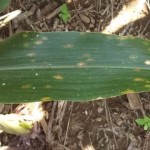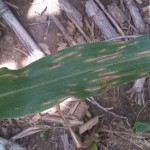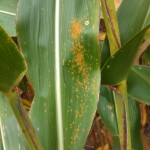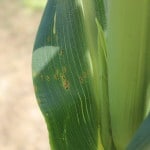Little to no disease has been observed in Tennessee so far and even to our south. Whether a fungicide in corn will pay off depends on if disease will be a PEST and rob yield, as well as the economics behind it (i.e. corn price and application costs). Scouting and correctly identifying diseases are important as well as understanding the other factors that contribute to disease robbing yield and being a PEST:
- P – Pathogen present, scouting and correctly identify your diseases (use mobile friendly field guide – guide.utcrops.com), keep good records of each field and what diseases have been observed
- E – Environment conducive for disease development, irrigated corn has greater risk to develop disease
- S – Susceptible host, what is your hybrid’s disease package, corn after corn has greater risk to develop disease issues
- T – Time, the earlier a disease develops the greater potential it has to reduce yield, while if it is late enough in the season when disease starts it will not be able to affect yield
Foliar fungicide applications in corn is more likely to provide a response in yield when disease is present or there is significant risk of disease, weather conditions favor disease development, the field is corn after corn, and a disease susceptible hybrid is planted. Research data from University of Tennessee and other universities has continuously found these factors to strongly influence the magnitude and consistency of yield response to a foliar fungicide application in corn.
When factors warrant a fungicide application, the application timing that has provided the most consistent yield response over non-treated corn is a fungicide application at VT or R1 growth stages (tasseling to pollination). Current research is investigating benefit from slightly earlier (~V10-V12) and later (~R3) applications.
The response in yield to break-even on fungicide application can be found in Table 1. Using a wide net of break-even scenarios based on past average corn prices and $12 to $36 application costs the table shows bushels per acre response that would be required to recover the cost of the fungicide application.
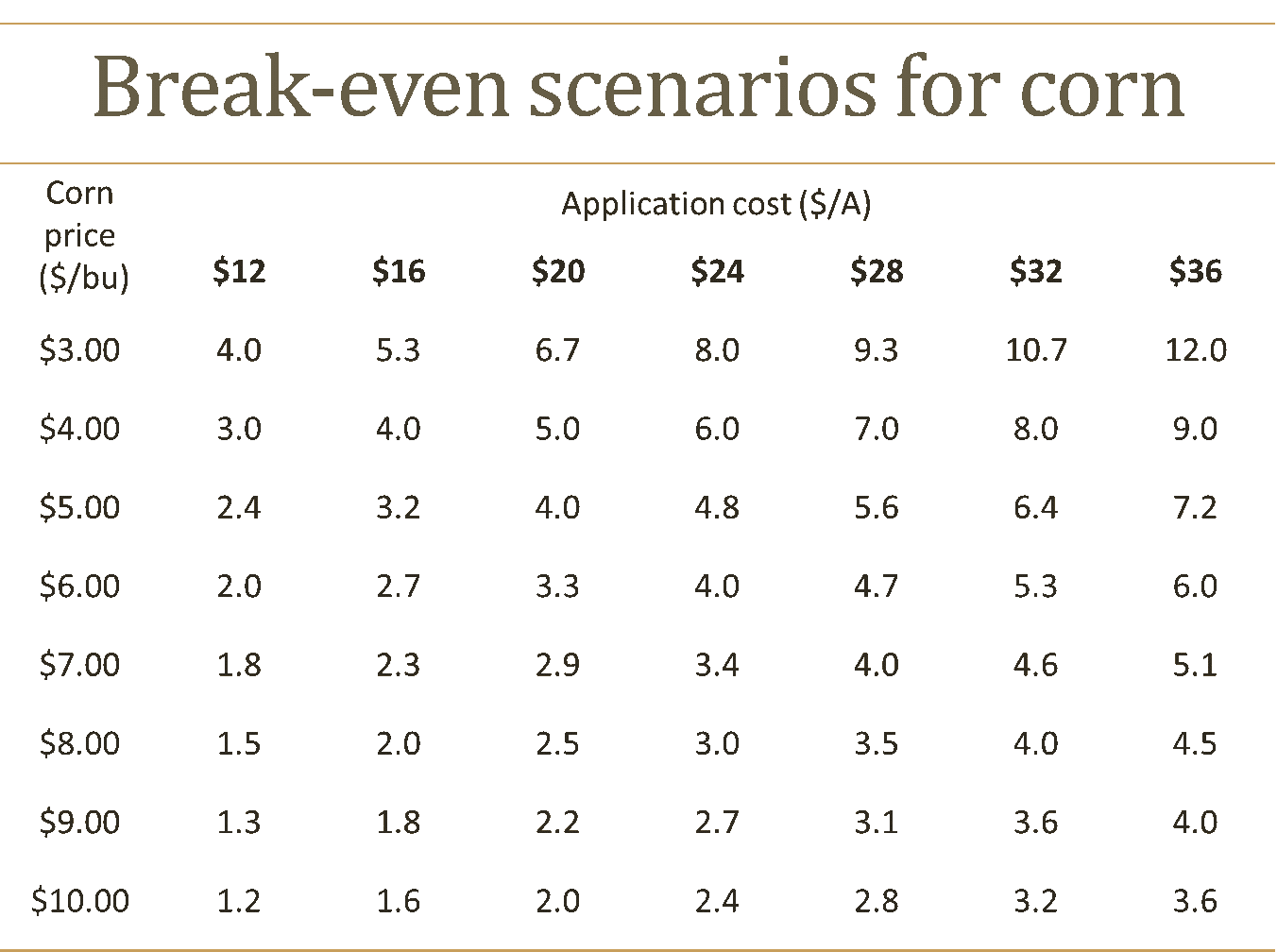
There are multiple fungicides labeled for corn and for the management of different diseases. The multistate collaborative, the Corn Disease Working Group (CDWG), has developed information on fungicide efficacy for control of certain corn diseases. This corn fungicide efficacy table can be found at UTcrops.com (Corn Fungicide Table PDF) and linked here as well. Application coverage is also important, which includes using sufficient amount of water per acre and adequate droplet size based on the product being applied.
Major corn diseases are favored by humid conditions, so the edges of fields will not be the place to scout. Within fields, especially low spots that hold moisture are good areas to scout for disease as it may develop in those areas first. For you tweeters out there, tweet a picture of any corn diseases you’re seeing, the disease name, and county and state to @corndisease.
One of the more common foliar diseases in Tennessee is gray leaf spot, especially in continuous corn fields with susceptible hybrids (images 1 and 2).
While southern corn rust is the one of the most damaging diseases, be sure it is correctly identified and not confused with common rust. The characteristics that differ between the rusts are the location, color, shape, and distribution of pustules (see Table 2 and images 3 and 4). When in doubt don’t hesitate to contact your local county agent for advice on disease management and identification.
Table 1. Comparison of Southern and Common Rust
| Pustule Characteristics: | Common Rust | Southern Rust |
| Location | upper and lower leaf surfaces | primarily upper leaf surface |
| Color | brownish, red | orange to light brown |
| Shape | elongated | round |
| Distribution | scattered | densely packed |
| Other differences: | ||
| Optimal Temperature | 61-77 °F | 77-82 °F |
| Probability of Effecting Yield | low | moderate-high |
Southern rust has only been reported in FL as of 6/20/2023. Visit corn.ipmpipe.org/southerncornrust/ to see the latest on where southern rust has been reported.
Lastly, there are some ‘new’ diseases in corn to be on the look out for which include: tar spot, Curvularia leaf spot, and crown rot. Read more about these diseases on the Crop Protection Network – Three Corn Diseases to Watch for in 2023.

